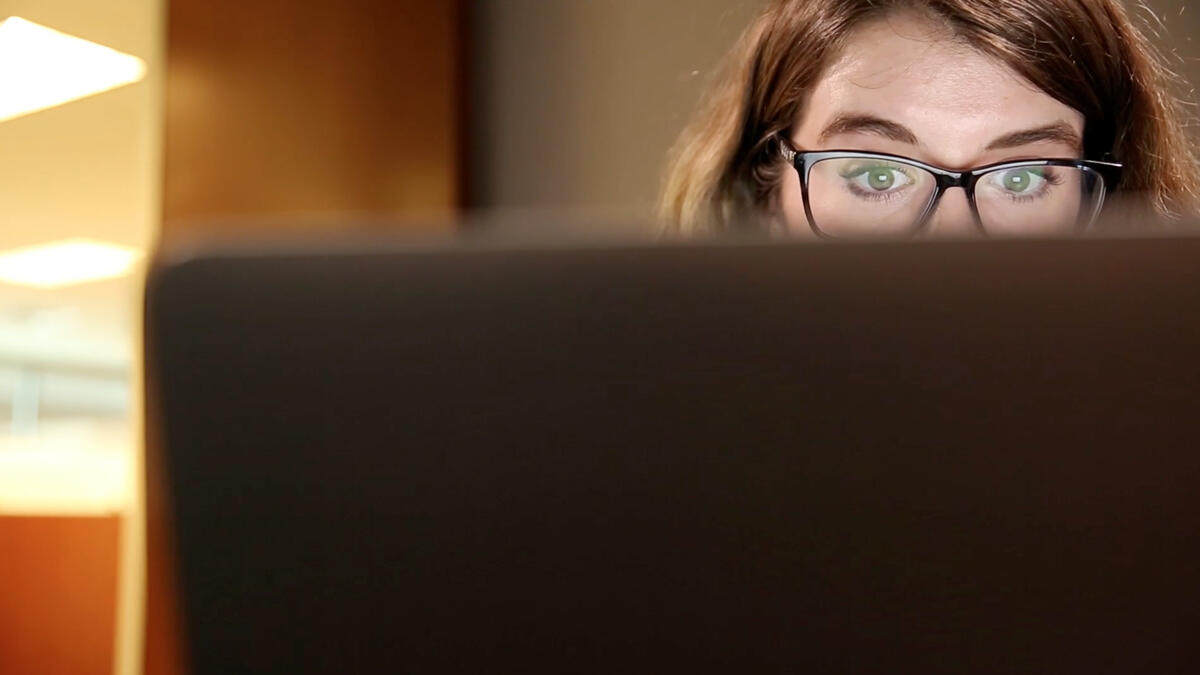News Co/Lab survey: Education, attitude matter when detecting fake headlines

People with higher education levels and more positive attitudes about news can more easily spot fake headlines, according to a research report by the News Co/Lab at Arizona State University’s Walter Cronkite School of Journalism and Mass Communication in collaboration with the Center for Media Engagement at the University of Texas at Austin.
Their report, “How the Public, News Sources and Journalists Think about News in Three Communities,” compiles and analyzes a series of online surveys of news consumers, news sources and newsrooms deployed during the course of the year.
In the headline exercise, a total of 4,854 community members from Fresno, California; Kansas City, Missouri; and Macon, Georgia, were given three headlines tailored to each city. Two were real. One was fake. Participants were asked to identify the phony headline.
Overall, 61.6 percent of the survey-takers could correctly identify the fake headline. For people with college degrees, the success rate rose to 67.7 percent. But for those without college degrees, it fell to 56.7 percent.
Although those with more education were more likely to answer correctly, nearly a third — 32.3 percent — of those with a college degree or better could not identify the fake headline.
“This is both good and bad news,” said Eric Newton, News Co/Lab co-founder. “Good, because a general education seems to help protect a person against hoaxes. Bad, because a third of the college graduates were still fooled. This suggests a need for a greater focus on news fluency.”
Other groupings, such as age, income and political affiliation, also produced different success rates, with seniors, those with lower incomes and Republicans less likely to detect fake news headlines. While 53.7 percent of those making less than $30,000 a year correctly identified the false headline, for example, 71.1 percent of those with incomes exceeding $150,000 a year did so.
“Overall, these findings show that more work needs to be done to help the public differentiate between what’s real and what’s not,” said Gina Masullo Chen, assistant director of the Center for Media Engagement. “We’re seeing a divide in news literacy among specific groups that may diminish their ability to fully understand what’s happening in the world. That’s a challenge for both the news media and for democracy.”
The research also linked a person’s attitude to an inability to spot fake headlines. In the attitude exercise, study participants were asked to identify the first word that came to mind when they saw the word “news.” Of those who answered the question, 61.9 percent of participants said a negative word, such as “fake” or “untrustworthy,” while 38.1 percent of respondents provided a positive or neutral word, such as “information” or “factual.” (Attitudes broke along party lines: 74 percent of Republicans but only 26 percent of the Democrats used a negative word.)
A stark example of the impact of attitude came in Kansas City. There, 68.6 percent of those who used negative words the word “news” identified the fake news headline. But 81.8 percent of those who used positive or neutral words could spot the fake.
The public survey was supplemented by two others of community news sources and journalists from the Fresno Bee, the Kansas City Star and the Telegraph in Macon. This allowed comparisons about how all three groups rated the news organizations on a variety of measures, including accuracy, fairness, transparency and engagement.
In general, journalists rated themselves considerably higher than did news sources and members of the public. When asked how much they agreed that the local news organization is “fair in its reporting,” for example, 94.3 percent of journalists agreed or strongly agreed, but only 50 percent of news sources and 17.8 percent of the public did so.
Though 75.3 percent of journalists surveyed agreed or strongly agreed that it is part of their news organization’s mission to help people understand how news works, only 28.4 percent of them agreed or strongly agreed that their news organization explains “who its journalists are and what they do.”
Read the full report can be from News Co/Lab.
The News Co/Lab, located at ASU’s Walter Cronkite School of Journalism and Mass Communication, is a collaborative lab aimed at helping people find new ways of understanding and engaging with news and information. The Center for Media Engagement is dedicated to helping media organizations meet their business and democratic goals.
Top photo: A new study by ASU's News Co/Lab at the Cronkite School shows that education and attitude toward news influences people's ability to spot fake headlines. Photo by Deanna Dent/ASU Now
More Law, journalism and politics
Can elections results be counted quickly yet reliably?
Election results that are released as quickly as the public demands but are reliable enough to earn wide acceptance may not always be possible.At least that's what a bipartisan panel of elections…
Spring break trip to Hawaiʻi provides insight into Indigenous law
A group of Arizona State University law students spent a week in Hawaiʻi for spring break. And while they did take in some of the sites, sounds and tastes of the tropical destination, the trip…

LA journalists and officials gather to connect and salute fire coverage
Recognition of Los Angeles-area media coverage of the region’s January wildfires was the primary message as hundreds gathered at ASU California Center Broadway for an annual convening of journalists…

